What is a nebulizer and compressor?
A nebulizer and compressor work together to allow certain medications to be converted from a liquid into a mist so they can be breathed in. A compressor is powered electrically and sends air to the nebulizer chamber. Using the compressed air, the nebulizer converts the liquid medicine into a mist. The mist is then breathed in either with a mask or a mouthpiece.
The use of reusable nebulizers is preferred for how well they work and how long they last. It is important to clean and disinfect your nebulizer after every use to prevent the growth of germs in and on the device.
Make sure you use the right nebulizer for the right medication. Take the nebulized medication as prescribed by your doctor, and as instructed by members of your CF team.
Using a nebulizer and compressor
Watch this video to learn about using a nebulizer and compressor.
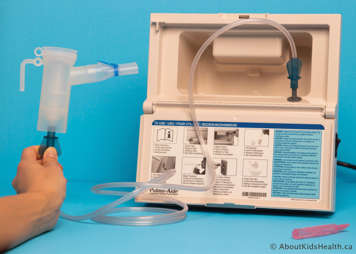
You will need a:
- compressor
- nebulizer
- nebule
Get the compressor ready
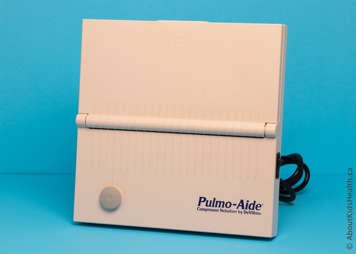
- Put the compressor on a clean table or counter.
- Plug in the machine.
Get the nebulizer ready
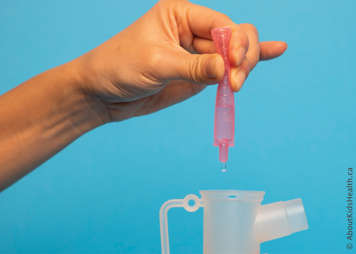
- Open the medication.
- Put the medication into the nebulizer cup.
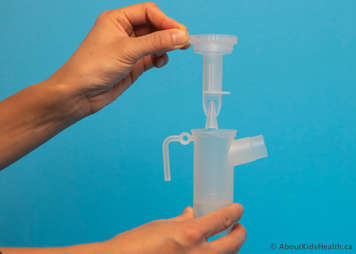
- Place the nebulizer insert into the nebulizer cup.
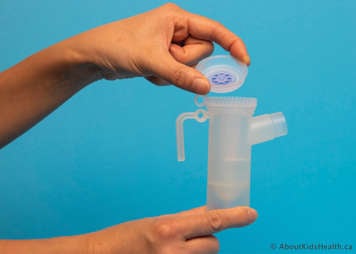
- Place the inspiratory valve cap onto the nebulizer.
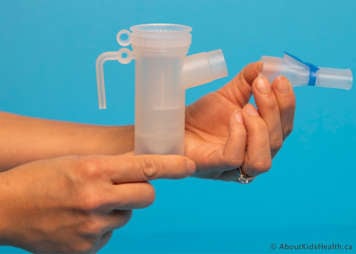
- Attach the mouthpiece with the expiratory valve to the nebulizer.
Connect the tubing
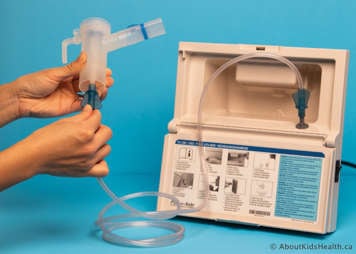
Connect the tubing from the compressor to the bottom of the nebulizer chamber.
Taking the medication
- Put the mouthpiece between your teeth and over your tongue and then close your lips around it.
- Make sure you are sitting in a supported position so that your breathing can be comfortable and deep.
- Turn the compressor on. The compressor will put out a fine mist of medication through the nebulizer.
- Take slow breaths in and out of your mouth. After every 3 or 4 breaths, take a deep breath.
- Make sure the nebulizer chamber stays horizontal so that it can work the best.
- When the mist stops coming out of the mouthpiece and the nebulizer chamber has very little liquid left in it, you are finished taking the medication.
- Take the mouthpiece out of your mouth.
- Turn off the compressor.
- Clean your nebulizer as you have been instructed.
Clean the mouthpiece and the nebulizer chamber after every treatment
- Disconnect the nebulizer from the tubing.
- Take apart the nebulizer.
- Rinse the pieces of the nebulizer chamber in warm soapy water.
- Rinse with sterile water.
- Shake out the extra water gently. Leave the nebulizer parts to air dry on a paper towel or a clean dish towel.
- To disinfect, refer to the reusable nebulizer cleaning and disinfection instructions.
You do not need to clean the tubing. If there is water in the tubing, turn on the compressor and blow the water out of the tubing.
Reusable nebulizers should be replaced based on how often they are used and the manufacturer’s guidelines.






